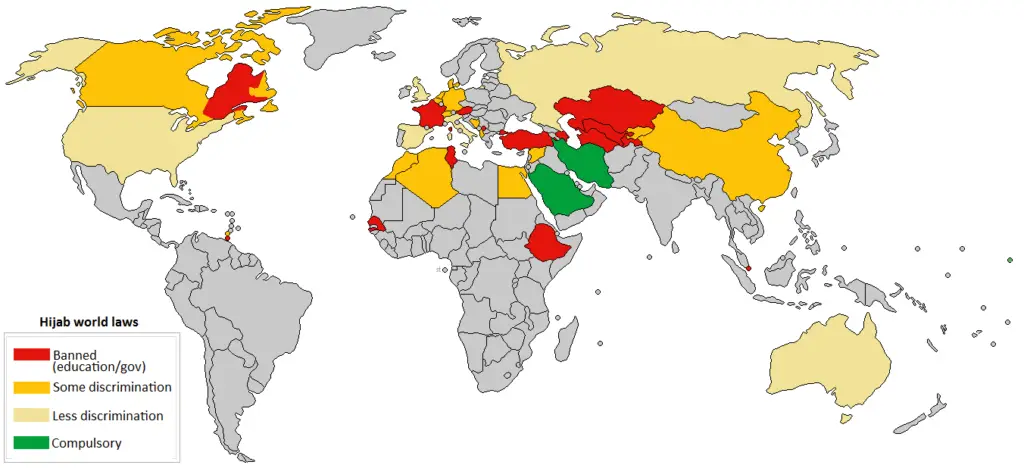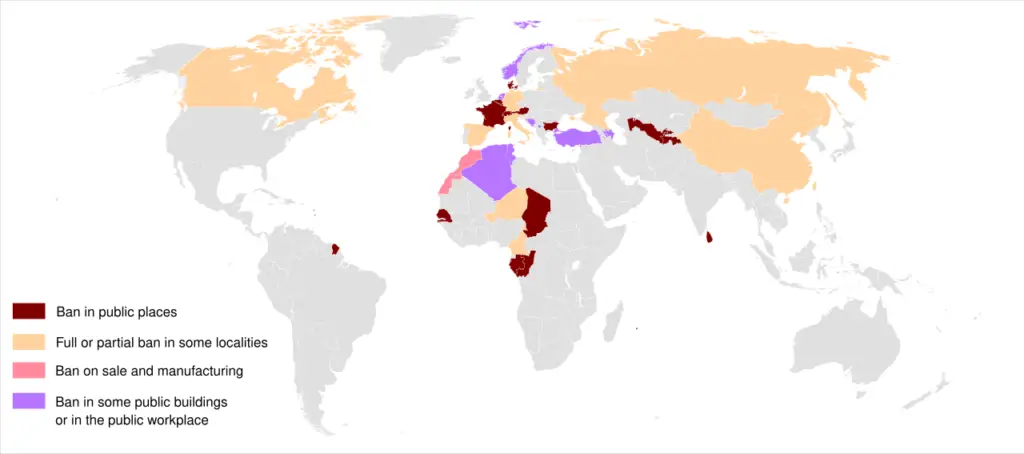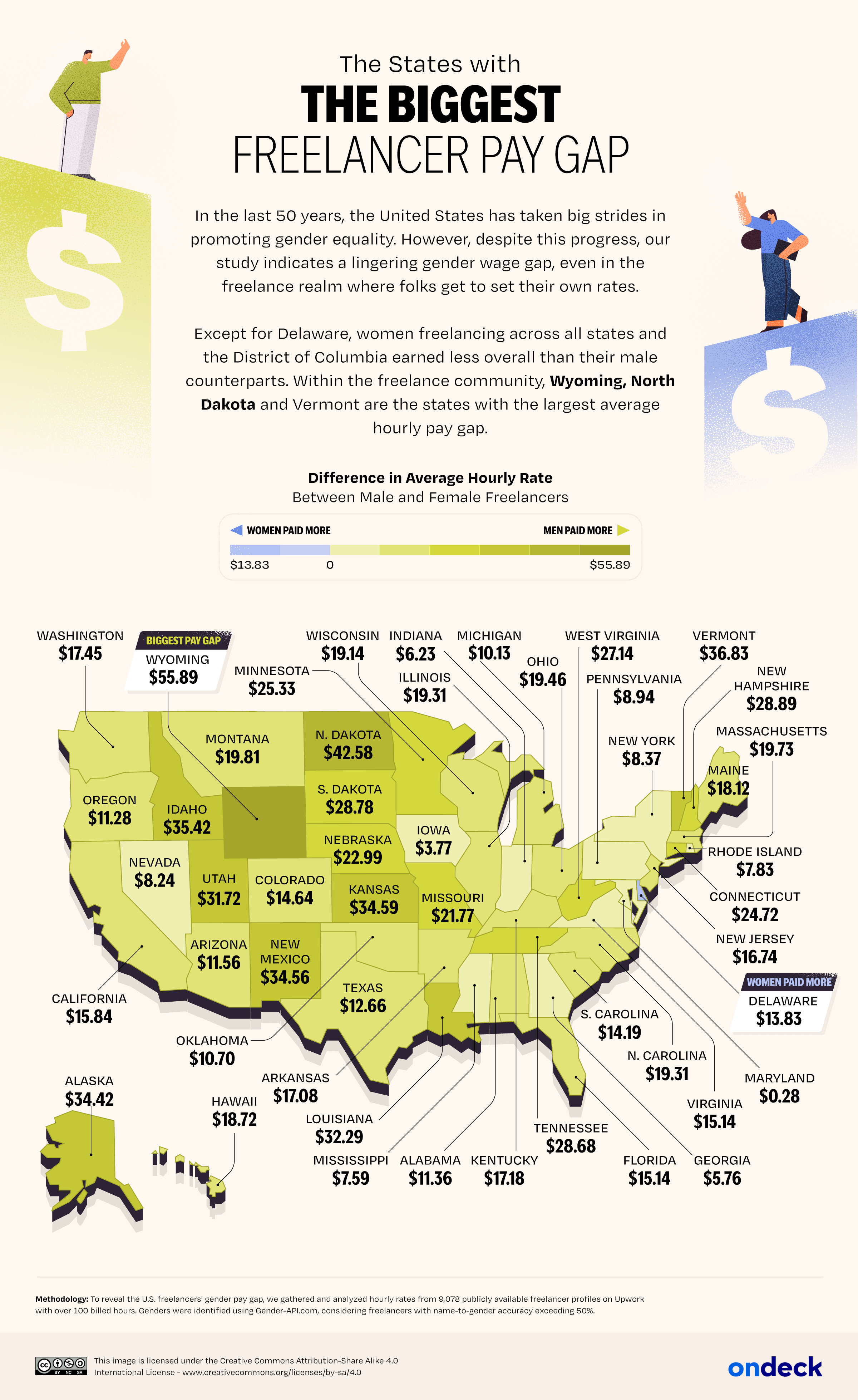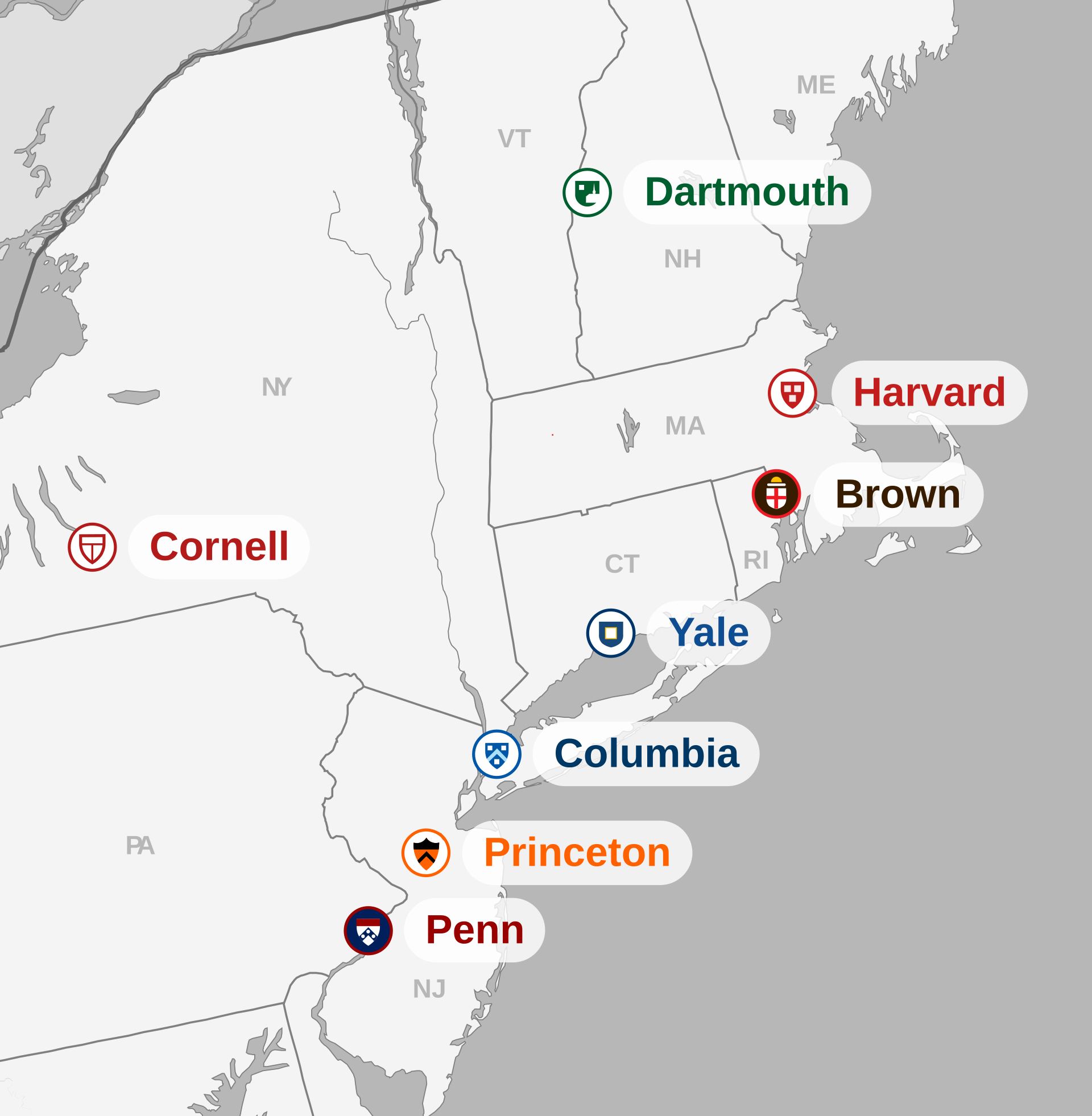How Countries Around the World Regulate Islamic Head Coverings
The regulation of Islamic head coverings has become one of the most debated topics in recent years, creating an intricate patchwork of laws across the globe. While some nations view these restrictions as a path to secularism or security, others see them as fundamental violations of religious freedom.
Types of Islamic Head Coverings: More Than Just Veils
Islamic head coverings represent a spectrum of garments, each with its own cultural and religious significance. The hijab, perhaps the most common, covers the hair and neck while leaving the face visible. It’s worn daily by millions of women worldwide, from university students to professional athletes. In fact, Nike’s introduction of the Pro Hijab in 2017 led to a 125% increase in women’s participation in sports in the Middle East.
The burqa and niqab represent more comprehensive coverage. The burqa, typically blue in Afghanistan and black in other regions, covers the entire body, including a mesh screen over the eyes. The niqab, while similar, leaves a slit for the eyes and is more common in Gulf countries.

Global Hijab Regulations: A Shifting Landscape
Europe’s Ongoing Debate
France, often considered the pioneer of restrictive legislation, banned religious symbols, including hijabs, in public schools in 2004. The law affected approximately 1,200 students wearing visible religious symbols, with 240 cases directly related to hijabs.
Austria followed with similar restrictions in 2019, framing them as integration measures. However, the Austrian Constitutional Court overturned parts of the ban in 2020, highlighting the complex legal battles these regulations often face.
Surprising Trends in Muslim-Majority Countries
Turkey’s relationship with the hijab illustrates how these regulations often reflect deeper political changes. The country maintained strict bans in universities and public institutions from 1997 until 2013, affecting an estimated 240,000 female students. Today, while officially allowed, women in hijabs still report facing discrimination in certain professional sectors.
Tunisia’s approach offers another interesting case. Despite being a Muslim-majority country, it banned the hijab in public institutions from 1981 to 2011, with former President Zine El Abidine Ben Ali claiming it was a political symbol rather than a religious requirement.

The Burqa Ban Movement: Security, Integration, and Identity
The spread of burqa bans tells a fascinating story about changing social attitudes and security concerns. France’s 2011 ban affected only about 2,000 women who regularly wore full-face coverings, yet sparked global debate.
Asian Approaches
Singapore’s targeted approach stands out. Rather than implementing a complete ban, they restrict face coverings only in specific public sector roles, particularly education. This policy affects approximately 721 schools and 33,000 teachers.
China’s restrictions in Xinjiang province are part of broader regulations affecting Muslim communities, including bans on “abnormal” beards and naming conventions.
The Morocco Model
Morocco’s unique approach focuses on manufacturing and sales rather than wear. In 2017, authorities halted burqa production, affecting about 600 small workshops. However, this didn’t formally restrict wearing existing garments, demonstrating a nuanced approach to regulation.
Economic and Social Impact
The regulation of Islamic head coverings has significant economic implications. According to the Global Islamic Economy Report 2023-2024, the global modest fashion market, including hijabs, reached $277 billion in 2023, showing substantial growth despite restrictions.
Employment impacts vary by region. In France, Institut Montaigne Study, Muslim women who wear hijabs are 15% less likely to receive job interview callbacks compared to those who don’t.
Cultural Shifts and Modern Interpretations
Recent years have seen interesting developments in how Islamic head coverings are perceived and regulated:
- Sports: International sports federations, including FIFA and the International Basketball Federation, have modified their rules to accommodate hijabs
- Fashion: Major brands like H&M, Uniqlo, and Dolce & Gabbana have launched modest fashion lines
- Technology: Companies are developing “smart hijabs” with built-in headphones and health-monitoring capabilities
For those interested in exploring world geography and cultural patterns, these detailed maps offer excellent references:
Do these regulations reflect genuine security concerns, or do they indicate deeper cultural tensions? Share your thoughts about these varying approaches to religious expression in the comments below.







